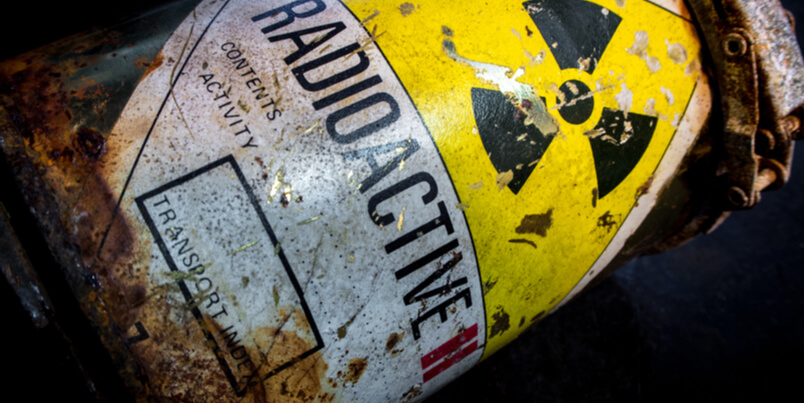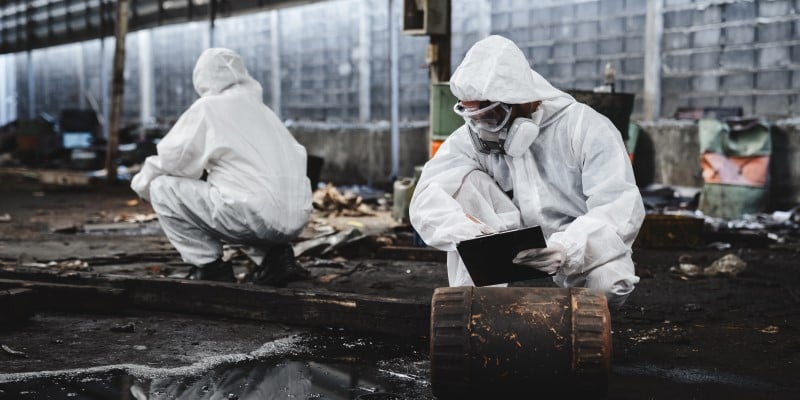 Emergency first responders face the possibility of encountering radioactive materials in even the most seemingly routine of scenarios.
Emergency first responders face the possibility of encountering radioactive materials in even the most seemingly routine of scenarios.
It might be in the course of containing an industrial fire, or attending a road transport accident or responding to an incident within a specialist medical facility.
Depending on the nature of the incident, a variety of radiation hazards could be present - alpha radiation (which has the highest ionising potential), beta radiation (which has moderate ionising potential) or gamma radiation - bundles of energy that have no charge or mass but that have by far the greatest penetrating power.
Measuring gamma radiation
When measuring gamma radiation there are two specific properties that need to be classified - the activity (or strength) of the gamma source and the amount (or dose) of ionising energy that is being absorbed by the body.
Whenever the presence of gamma radiation is suspected, the readings obtained from a portable radiation survey meter will be crucial in measuring the activity of the source to aid decision-making and maintain safety.
The guiding principle of radiation safety (ALARA - "as low as reasonably achievable" or ALARP - "as low as reasonably practicable") advises that exposure to any ionising radiation dose, however small, should be avoided wherever possible.
Operational guidelines published by the UK's Chief Fire and Rescue Advisor in 2011 advise that the maximum allowable dose for all radiation workers (including firefighters/first responders) not exceed 20 mSv (2 Rem) per year, with a recommended dose constraint of 5 mSv (0.5 Rem) per each operational incident.
Furthermore it recommends a limit on females of reproductive age of a maximum of 13 mSv (1.3 Rem) within any three month period.
The three core radiation safety principles
Where it is known that the only radiation at an incident is from a sealed source (ie that there is no contamination risk) the protection of personnel will depend upon a combination of three factors - time, distance and shielding.
Time
An individual's potential external radiation exposure (or dose) is directly connected to the duration of that exposure, or the amount of time that they are exposed.
By limiting the time in the radiation field the amount of radiation absorbed will correspondingly reduce.
Distance
The amount of radiation an individual receives is dependant on how close they are to the source.
By knowing the intensity at one distance it is also possible to determine the intensity at any other distance.
The inverse square law states that radiation exposure and distance are inversely related - meaning that the strength of ionising radiation from a point source will decrease with the square of the distance it travels.
The greater the distance from the source of radiation, the less the intensity of the dose. If, for example, the distance between an object and a radiation source is doubled, then there will be one fourth as much exposure.
Likewise, if the distance between the object and the source is multiplied by 10 times then the exposure will reduce by 100 times.
Shielding
Radiation shielding is based on the principle of attenuation - or the degree to which a radio wave or ray's effect can be blocked or bounced with the use of a barrier material.
There are several factors that will influence the selection and use of radioactive shielding materials and the amount of shielding required will be dependant on the penetration of the dose.
Metals, for example, are strong and highly resistant to radiation damage.
Lead is especially well-suited to lessening the effects of gamma and x-rays as it has a higher atomic number.
Generally speaking, higher-density materials will be more effective at blocking gamma and x-ray radiation than lower-density ones.
In some cases though, lower-density materials are able to make up for their disparity with increased thickness.
Additionally, understanding the principles of ALARA, alongside gaining experience with inverse square law, should be basic components of first response training. These concepts are best learned through experience, which is why simulators can be powerful training tools. To learn more about radiation safety training, including best practices and the benefits of simulators, download our free guide.
It is vital that first responders have an understanding of the different environments in which radiation may be found, and that they are aware of the types of radioactive sources that may be present in those locations.
Whenever the presence of ionising radiation is known or suspected, taking steps to actively reduce the exposure time, and putting distance and shielding between the individual and the radiation source, will be crucial in managing, and minimising, risk.







